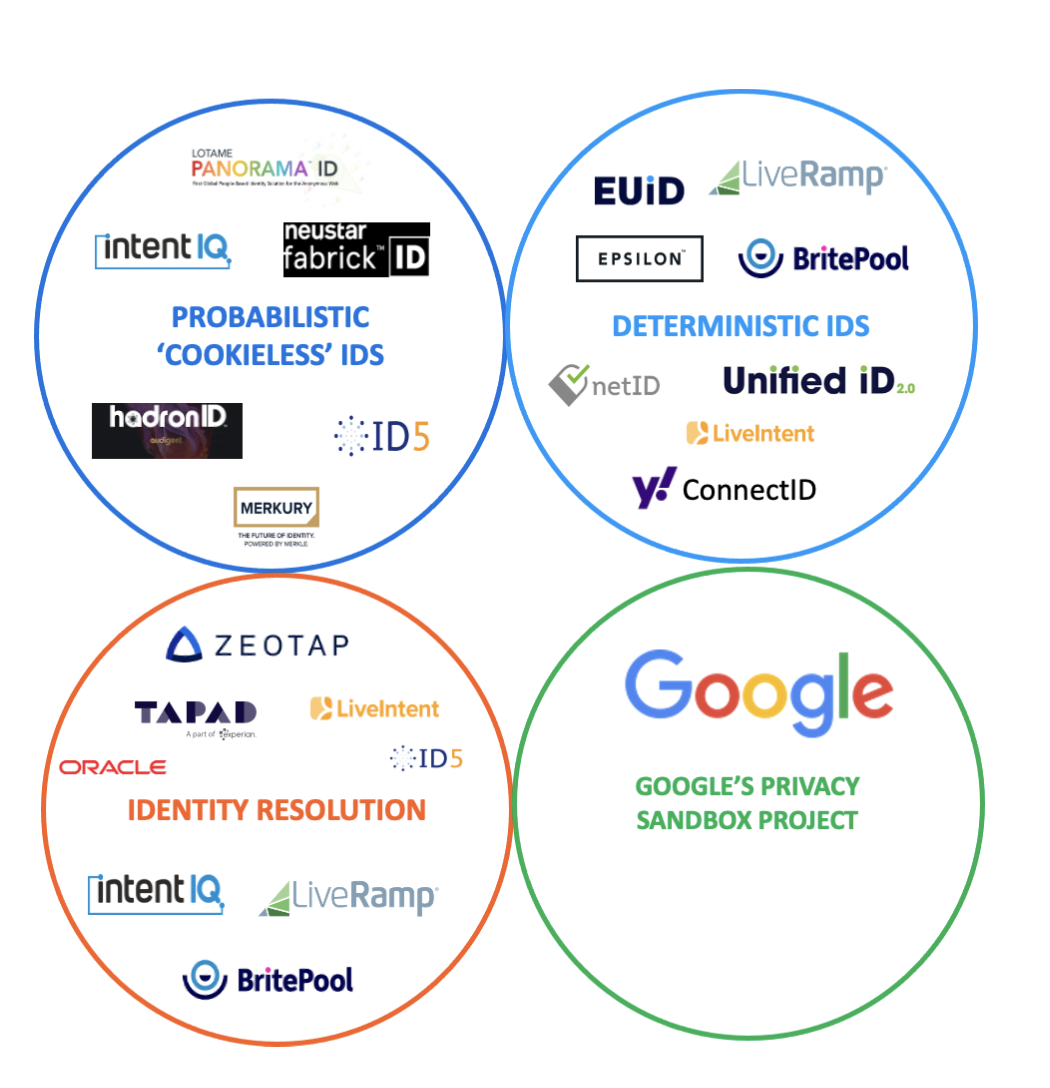
White Paper | Authors: Darshan Radia, Dentsu International and Fai-keung Ng, The Trade Desk
Identity in the world of digital advertising is the ability to uniquely identify a user online, allowing advertisers to reach those users for marketing their products and services. It is the foundation for all digital advertising activities from user (re)targeting to ROI measurement of media spends.
However, the ecosystem around identity has been evolving. With Apple’s App tracking Transparency framework and Google’s planned deprecation of third party cookies, the world of identity is fast-changing.
In this article, we will talk about some of these changes, how identity matters, various Identity stakeholders, the latest industry trends around identity and see how industry players are preparing themselves for the new user-first privacy-compliant world that we are stepping into. More importantly, as the industry evaluates the cookieless privacy compliant identifiers, the identity landscape is growing rapidly and sometimes difficult to follow. Interoperability will be vital to connect various identifiers for seamless targeting, personalisation, and measurement.
Is the time is ripe for the unifying role of regional alliances with agencies, ad tech players and publishers to unite with identity-centric solutions to address challenges posed in a cookieless world?
With the digital landscape getting more complex, increasing share of attention is moving from offline media to online: Spotify is not only getting our share of ears for music, its podcast also started capturing time spent on other traditional radio content. The pandemic accelerated cord-cutting and shifted delivery of premium video content online at record speed.
Financial pressure and popularisation of premium video streaming forced subscription only services like Netflix and Disney+ joining the bandwagon of Advertising-based Video On Demand (AVOD) alongside the likes of iQIYI and Hulu.
While video games used to be associated with PC or console, smartphone gaming and esport are rapidly creating a new media channel of its own kind. Even the traditional Out of Home (OOH) players are aggressively migrating their assets to Digital Out of Home (DOOH) – as an example, PWC predicts that DOOH will account for 66% of the overall OOH revenue in Singapore in 2022.
What does the Digital Identity landscape look like?
While the Digital Identity landscape is actually extremely complex, in this article we attempt to simplify it to four categories:
1. Deterministic IDs
2. Probabilistic IDs
3. ID resolution (graphs)
4. Google Privacy Sandbox.
Deterministic IDs based solutions are based on information that is known to be true because it is supplied by people directly or is personally identifiable. The most common way to deterministically match users across a wide range of data sets is by using an email address, ‘unique’ to an individual.
-
-
Made from Emails, Phone Numbers and other PII.
-
Smaller in scale, but more precise
-
Examples: UnifiedID 2.0, RampID, COREID…
-
Probabilistic IDs based solutions are based on information around unauthenticated data points that are connected together based on probabilities and available data that is known to be true. Probabilistic identity uses various data sets such as IP address, location, device ID, cookies, and algorithms to identify the same users across devices and applications.
-
-
-
Made from cookies or pixels.
-
Have greater reach but less precision.
-
Examples: Panarama ID, ID5, Fabrick ID…
-
-
Identity Resolution provides services focused on connecting IDs to people or households; using identity graphs based on a mixture of probabilistic and deterministic methods.
Google’s Privacy Sandbox Project, as a category of its own, represents a broad and ambitious set of changes that aim to tackle cross-site tracking. It proposes open standards everyone can implement. Google recently shared an updated plan and timeline for Privacy Sandbox for the web and the path towards phasing out third-party cookies. Google’s up-to-date timeline and plan can be referred to on the Privacy Sandbox website. Privacy Sandbox on Android will introduce new solutions that operate without cross-app identifiers (including Advertising ID) and limit data sharing with third parties.

Digital Identity and its related solutions, like other software products, has a diverse landscape. Over time, the number of players and solutions are growing rather than consolidating because of the diverse needs: while an advertiser may find RampID attractive because of its CRM onboarding capability, another may choose ConnectID because of its heavy investment in Yahoo, yet another may want to use UnifiedID 2.0 because of its wide acceptance in programmatic… On the other hand, for Digital Identity solutions to work, consistency across the ecosystem is a non-compromisable requirement.
How could we address these seemingly opposing forces so the advertising industry can finally attain omnichannel addressability?
Various proprietary identifiers work well within their own environments in a siloed identity landscape, but face challenges when connecting to other identifiers for activation or measurement. This vacuum in the advertising supply chain of identifiers has led to identity players developing interoperable IDs with the promise to stitch together and unify disparate IDs that a marketer can use for targeting, personalisation and measurement.
Interoperability has long been a proven approach to build an ecosystem that optimises for customers’ rather than vendors’ needs. Take the Personal Computing industry as an example; as we’re writing this article, we use a combination of Microsoft Word and Google Doc on a Mac that is built on top of an Intel CPU. This may not sound anything new today, but it would be unthinkable during the early stage of PC when Microsoft and Apple were almost two mutually exclusive ecosystems. In PC, the industry has responded to its customers’ demand, put their customers’ choice first and eventually it has created a much bigger market for all. We believe digital identities should move toward that goal.
In reality, this is somewhat happening. Although adtech has long been a fragmented place, we’ve seen increasing collaboration based on rational calculation. While the ideal state of digital identity interoperability is still not within reach, we can see the fabric of such is in the making by just reading the constant identify partnership headlines:
Epsilon Is Making Its Identity Platform Interoperable With Unified ID 2.0
Yahoo expands Merkle identity partnership
Eyeota collaborates with ID5 on Cookie-less ID
LiveRamp and Lotame Announce Expanded Identity Partnership
Neustar collaborates with Snowflake
Developing an interoperable set of digital identities would allow marketers to activate, measure, and connect disparate media components and optimise their media spend holistically. The increased transparency enables marketers to put the media dollars against the more performant channels/tactics and it will eventually benefit the adtech players through higher CPM and budget shift towards measurable, and more effective, channels/tactics. Marketers should advocate collaboration of adtech players and interoperability of various identity solutions; while we can’t control the fragmenting digital media landscape, it’s within our reach to develop an identity framework which could link these pieces together and create the much needed transparency and scale for our customers.

